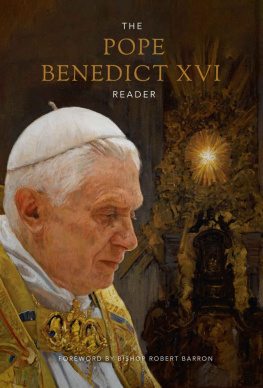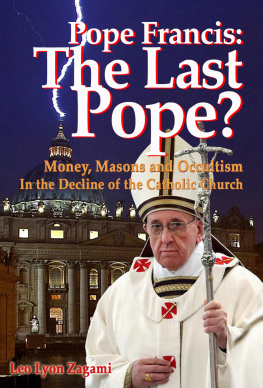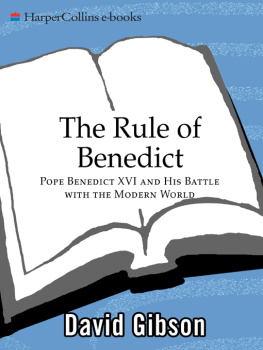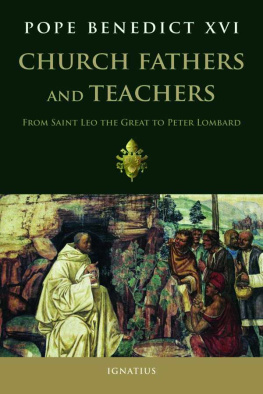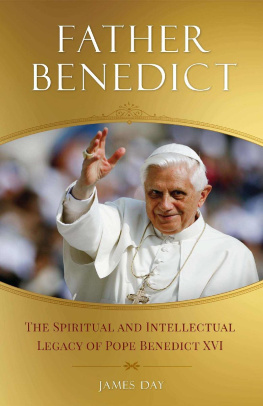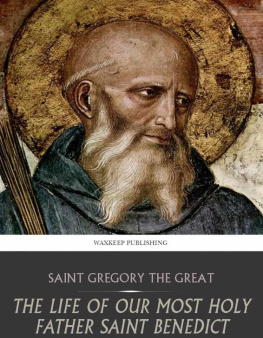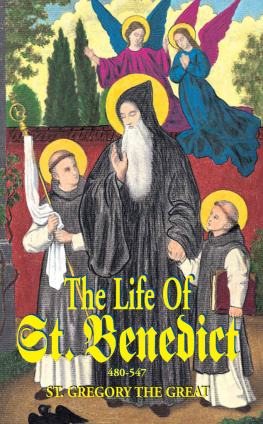The Unknown Pope
The Unknown Pope
Benedict XV (19141922) and the Pursuit of Peace
JOHN F. POLLARD
www.bloomsbury.com/thegreatwar 

Bloomsbury Academic
An imprint of Bloomsbury Publishing Plc
50 Bedford Square
London
WC1B 3DP
UK | 1385 Broadway
New York
NY 10018
USA |
www.bloomsbury.com/thegreatwar
Bloomsbury is a registered trade mark of Bloomsbury Publishing Plc
First published in 1999 by Geoffrey Chapman, a Continuum imprint
First paperback 2000
1999 John F. Pollard
John F. Pollard has asserted his right under the Copyright, Designs and
Patents Act, 1988, to be identified as Author of this work.
All rights reserved. No part of this publication may be reproduced or transmitted in
any form or by any means, electronic or mechanical, including photocopying,
recording, or any information storage or retrieval system, without prior
permission in writing from the publishers.
No responsibility for loss caused to any individual or organization acting on or
refraining from action as a result of the material in this publication
can be accepted by Bloomsbury or the author.
Visit www.bloomsbury.com to find out more about our authors and their books
You will find extracts, author interviews, author events and you can sign up for
newsletters to be the first to hear about our latest releases and special offers.
British Library Cataloguing-in-Publication Data
A catalogue record for this book is available from the British Library.
eISBN-13: 978-1-4729-1002-8
Library of Congress Cataloging-in-Publication Data
A catalog record for this book is available from the Library of Congress
Contents
The Della Chiesa family in 1862.
Courtesy of the Della Chiesa family archive.
Giacomo and family in 1902.
Courtesy of the Della Chiesa family archive.
Gioacchino Pecci, Pope Leo XIII (18781903).
By kind permission of Libreria Editrice Vaticana.
Cardinal Mariano Rampolla, Secretary of State to Leo XIII and Giacomos mentor.
By kind permission of Libreria Editrice Vaticana.
Giuseppe Sarto, Pope Pius X (19031914).
By kind permission of Libreria Editrice Vaticana.
Cardinal Raphael Merry Del Val, Secretary of State to Pius X.
By kind permission of Libreria Editrice Vaticana.
Cardinal Pietro Gasparri, Secretary of State to Benedict XV and Pius XI (from 1922 to 1930).
By kind permission of Libreria Editrice Vaticana.
The consecration of Giacomo Della Chiesa as bishop in the Sistine Chapel, 1907.
Courtesy of the Della Chiesa family archive.
Archbishop Della Chiesa visiting a mountain parish, 1908.
Courtesy of the Della Chiesa family archive.
The coronation of Benedict XV in the Sistine Chapel, 6 September 1914.
Courtesy of the Della Chiesa family archive.
French prisoners of war brought to Switzerland by Benedict XV.
Courtesy of the Della Chiesa family archive.
British prisoners of war brought to Switzerland by Benedict XV.
Courtesy of the Della Chiesa family archive.
Benedict XV in his study in the Vatican.
Courtesy of the Della Chiesa family archive.
The French diplomatic delegation in the Vatican for the canonization of Joan of Arc in 1921.
By kind permission of Libreria Editrice Vaticana.
Benedict XV on his deathbed, January 1922; his friend Carlo Monti is on his knees, his head turned towards the camera.
By kind permission of Libreria Editrice Vaticana.
The tomb of Benedict XV in the crypt of St Peters Basilica.
Courtesy of the Della Chiesa family archive.
I owe a particular debt of gratitude to Reggie Norton, without whose inspiration and moral and material support this book would quite simply not have seen the light of day. Anglia Polytechnic University Inter-Schools Research Committee gave me leave of absence and helped to finance various research trips as well as giving me a reduced timetable to complete writing. I am also grateful to Michael Walsh for persuading me to write it, and for reading drafts of chapters. Stewart Stehlin, Peter Kent and Noel Currer Briggs also helped by reading drafts and making comments, and Noel has once again made the index. Theo Schulte and Alexander Baer gave me much help with knotty questions relating to the First World War and Germanys role in it. Piers Brendon and John Cornwell gave pearls of wisdom about writing biographies. For any errors of fact, and for all opinions and interpretations, the responsibility is of course mine alone. Joe Cremona kindly put me in touch with the Della Chiesa family in Rome, and I am deeply grateful to members of that family for their hospitality and for all the help they gave me, especially access to their family archive. I also wish to thank the staff of the Secret Vatican Archives, especially Mgr Charles Burns (now retired), Fr Chappin SJ of the Archive of the Congregation for Public Affairs of the Church Archives, the Archiepiscopal Archives in Bologna, the library of the Istituto Luigi Sturzo, the Biblioteca Nazionale and the library of the Istituto di Storia Moderna e Contemporanea in Rome. I am greatly in the debt of James Walston for taking most of the photographs, and to him and Nora Walston for their friendship, help and hospitality in Rome over many years. I must also pay tribute to Brian Williams, who did excellent research work on my behalf during the last stages of writing the book. I wish to thank Ruth McCurry and Diana Smallshaw for guiding me through the stages of production. Last, but by no means least, I must acknowledge the moral support of Pompey.
Sutton-in-the Isle,
June 1998
To the memory of Peter Hebblethwaite,
vaticanista straordinario
On 3 September 1914, Cardinal Giacomo Della Chiesa, Archbishop of Bologna, was elected Pope. When the American Cardinal Gibbons, Archbishop of Baltimore, arrived at the Vatican and was told the news he is reported to have said of Della Chiesa Whos he? His ignorance can be excused, as can that of the Romans, who were equally puzzled at the announcement of the name of Della Chiesa. Giacomo Della Chiesa was not a very well-known figure outside of his Bolognese exile, and had been a cardinal for only four months. He became a world figure during his pontificate, 1914 to 1922, when he attracted hostility from both sides as a result of his efforts to bring the First World War to an end, and gratitude from some of the many people, military and civilian, who were helped by his humanitarian activities.
His reputation was to suffer further misfortunes after his death. Indeed he faded into almost complete obscurity, perhaps on account of the shortness of his reign only seven years and five months in all. Peter Hebblethwaite describes him as the most invisible and unappreciated pope this century. He has fared better in English: in 1959 Fr Walter Peters wrote The Life of Benedict XV. This is a very serious and scholarly study which should be read by anyone interested in the story of Giacomo Della Chiesa. But it suffers from a major defect, the authors limited knowledge of the contexts in which Benedict operated, in particular the Italian political one. It has also, inevitably, become outdated with the passage of time and the opening up of various private and public archives. Those of the Vatican are now open to the end of Benedicts reign and it has also been possible to consult the Della Chiesa family archives and the archives of the archiepiscopal curia in Bologna. In addition, biographers now have available to them both the letters of Benedict to his friend Valfr di Bonzo and to his vicar-general in Bologna, Ersilio Menzani. Most important and most precious of all are the diaries of Baron Carlo Monti, life-long friend and the intermediary between Benedict and the Italian government for the whole of his reign.
Next page

